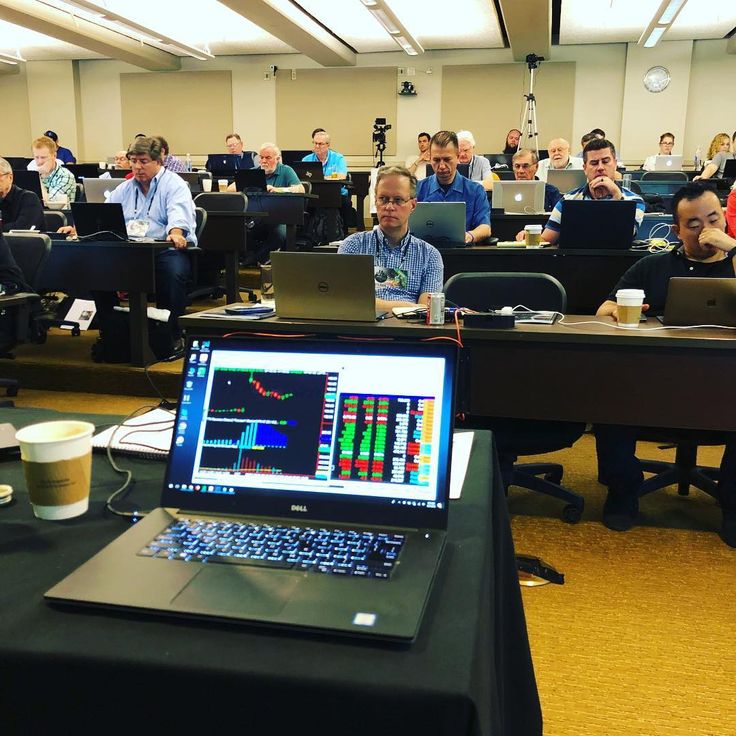Welcome to DayTradingProTips
Your trusted space to understand how global markets move. We provide clear, practical education on forex trading, market behavior, and broker insights — designed to help you make informed decisions, not emotional ones. At DayTradingProTips, we believe knowledge is the real edge in every trade.

Brokers and the Forex Market — Learn First, Trade Later
We focus on education: how brokers work, costs (spreads, commission, swaps), execution behavior, and the structure of the forex market. Start on demo, journal fills and slippage, and build a simple, testable plan before risking capital.
For reliable market intelligence and timely insights, refer to Bloomberg (global markets, real‑time headlines, analytics), Reuters (fast wire for market‑moving news and data alerts), Wall Street Journal (in‑depth coverage of markets, policy, and corporates), Financial Times (global finance with strong Europe focus), CNBC (live market coverage and interviews), MarketWatch (market summaries and earnings), Barron’s (premium investing analysis), Yahoo Finance (quotes, charts, and aggregated news), Benzinga (fast headlines and movers), na FXStreet (forex news, economic calendar, na central‑bank coverage).
Table of Contents
Recommended Brokers
Trading Education
Market Education
Recommended Brokers 2025
Educational access and demo-first practice. No investment advice.
Broker Comparison 2025
Compare key features, costs, and platform options across leading brokers. All data is for educational purposes only.
| Broker | Minimum Deposit | Spreads (EUR/USD) | Platforms | Regulation | Demo Account | Visit |
|---|---|---|---|---|---|---|
| Deriv | $5 | From 0.0 pips | Deriv MT5, Deriv X, DTrader | MFSA, VFSC, LFSA | Yes | Visit |
| Exness | $1 | From 0.1 pips | MT4, MT5, Exness Terminal | FCA, CySEC, FSCA | Yes | Visit |
| HFM | $5 | From 0.0 pips | MT4, MT5, HFM Platform | FCA, CySEC, DFSA, FSCA | Yes | Visit |
| XM | $5 | From 0.6 pips | MT4, MT5, XM WebTrader | ASIC, CySEC, IFSC | Yes | Visit |
| AvaTrade | $100 | From 0.9 pips | MT4, MT5, AvaTradeGO | ASIC, FSCA, CySEC | Yes | Visit |
Trading Platform Comparison
| Platform | Best For | Mobile App | Custom Indicators | Automated Trading | Learning Curve |
|---|---|---|---|---|---|
| MetaTrader 4 | Forex Trading | Excellent | Thousands available | Expert Advisors | Moderate |
| MetaTrader 5 | Multi-Asset Trading | Excellent | Thousands available | Expert Advisors | Moderate |
| cTrader | ECN Trading | Excellent | Limited but growing | cBots | Easy to Moderate |
| Deriv Platforms | Synthetic & Options | Good | Limited | Basic | Easy |
| Proprietary Platforms | Beginner-Friendly | Varies | Limited | Basic | Easy |
Account Type Comparison
| Account Type | Best For | Minimum Deposit | Spreads | Commission | Leverage |
|---|---|---|---|---|---|
| Standard | Beginners | $10-$100 | Wider | No | Standard |
| ECN/RAW | Experienced Traders | $100-$500 | Tighter | Yes | Standard |
| Islamic | Swap-Free Trading | Varies | Varies | Varies | Standard |
| Professional | High-Volume Traders | $10,000+ | Tightest | Lower | Higher |
How Brokers Operate: Models, Costs, and Practical Due Diligence
Brokers connect you to markets through business models that influence pricing and execution behavior. Some firms route orders externally in an agency-style workflow, while others internalize part of the flow as market makers. Neither model is universally "better"; each has trade-offs that matter more or less depending on your strategy, instruments, and trading windows. What consistently matters is your total cost of trading—spread, any commission, and the financing you pay when positions cross sessions—together with the difference between the price you planned to transact and the price you actually received (slippage). During liquid windows such as the London–New York overlap, spreads can be tighter and slippage smaller; around events or in thin liquidity, both can expand. Treat these effects as measurable inputs rather than surprises: record intended versus filled prices and compare by hour of day and instrument so your plan aligns with the conditions you actually face.
Execution quality is not an abstract marketing term; it is observable in your journal. If your approach relies on fast entries and exits, you will be more sensitive to microstructure noise, queue position, and partial fills than a slower, higher-timeframe method. Learn the exact order types your platform supports—market, limit, stop, stop-limit, OCO, partial close—and rehearse them on a demo account until you can execute the same sequence reliably in multiple market states. Pay attention to behavior during rollovers, session opens, and scheduled announcements. Latency, requotes, and rejection patterns are all forms of data; when you see them, write them down and adapt position size and tactics rather than hoping conditions will change in your favor. The goal is not to eliminate variability, which is impossible, but to design a process that remains stable across normal fluctuations.
Risk management anchors every evaluation. Define risk per idea as a small, consistent fraction of equity so that a normal sequence of losing trades is survivable without forcing you to abandon your plan. Place stop-losses using either volatility metrics (for example, an ATR multiple) or structural references (recent swing highs/lows), and avoid moving stops wider once a trade is live. Keep leverage modest, understand maintenance margin and liquidation rules, and consider the compounding effect of overnight financing if you hold positions across sessions. If your method requires holding through gaps or events, simulate those conditions on demo explicitly to calibrate realistic slippage and position sizing. Over time, your objective is to keep all-in costs and error small relative to your method's average edge so that the math of expectancy can work in your favor.
Due diligence is straightforward but must be written down. Verify regulation and applicable client protections in your region, read risk disclosures, and confirm the exact instruments, sessions, and platform features you need. Start on demo to learn order tickets, charting layouts, alerts, and routine workflows such as scaling in/out, placing OCO brackets, or closing partial positions. Journal every step: intended price, filled price, spread observed, any slippage, and the context (session, news, volatility). After several weeks you will have a realistic picture of costs and execution behavior for your approach. Only then consider live trading with small size and predefined daily loss limits. Education first, demo first, and steady iteration are the path to building a process that you can execute consistently.
Jump to: Forex · Commodities · Stocks · Crypto · CFDs · Binary Options · Futures · Options
Popular Educational Topics
Risk Management
Position sizing, stop-loss placement, drawdown limits, and the math behind survival.
Technical Analysis
Trends, support/resistance, indicators, and price action with practical examples.
Broker Costs & Platforms
Spreads, commissions, swaps, platform tools, order types, and data considerations.
Platforms & Tools: Building a Practical Workspace
A productive trading environment balances speed, clarity, and discipline. Whether you use MT4/MT5, cTrader, proprietary web terminals, or advanced multi-asset platforms, the objective is the same: reduce friction and prevent avoidable errors. Organize layouts, hotkeys, and alerts so your process is consistent across sessions.
Charting & Layout
Standardize timeframes, color schemes, and indicator sets. Use templates so setups look identical day to day. Avoid indicator overload—focus on a small, complementary toolkit.
Order Tickets & Hotkeys
Test bracket orders (entry + stop + target), partial closes, and stop-limit options. Hotkeys can reduce click errors but require practice on demo until muscle memory forms.
Alerts & Journaling
Set alerts for levels and time-of-day routines. Journal every trade: setup, trigger, stop, target, slippage, and emotions. Use data to refine execution and risk rules.
Explore platform-focused education in Technical Analysis and Trading Strategies. For mobile readiness and research, see Trading Apps and Trading Software.
Risk Management: Mathematics of Survival
Sustainable trading emphasizes capital preservation. The goal is not perfection but staying in the game long enough to let a verified edge play out. Define risk per trade, respect daily loss limits, and keep average losses smaller than average gains.
Position Sizing
A simple formula: position size ≈ (Account × Risk%) ÷ Stop distance. If risk is $25 on a $5,000 account (0.5%) and stop is 25 pips, target $1/pip exposure. Use demo to validate mechanics before live trading.
Loss Limits
Daily loss caps (e.g., 1–2% of equity) can limit drawdowns and prevent overtrading. When the limit hits, stop trading and review the journal.
Learn more in Forex Day Trading and CFD Day Trading. For algorithmic or copy trading, consider extra safeguards like reduced size during regime changes.
Education Roadmap: From Basics to Consistency
Begin by understanding market structure and order types while you build platform familiarity on a demo account. The objective is fluency—placing, managing, and exiting positions with the same routine every time.
Choose a single strategy—trend-following, mean-reversion, or breakout—and write explicit rules for entries, invalidation, and management. Simplicity in the beginning improves consistency.
Define risk parameters before you click: a small risk per trade, ATR-aware stops, and a daily loss cap that protects decision quality. These constraints keep outcomes survivable during learning.
Backtest to understand tendencies, then forward-test on demo to validate edge with live conditions, spreads, and slippage. Journal everything so improvements are evidence-based.
When you transition to live, keep size tiny and maintain strict journaling. Expand gradually only after your process is stable across different sessions and regimes.

Use our detailed guides: Trading Strategies, Technical Analysis, and the Education section for structured learning.
Order Types & Practical Examples
Market & Limit
Market orders prioritize speed; limit orders prioritize price. Day traders often mix both, depending on liquidity and urgency.
Stops & Trailing Stops
Stops define max loss and help enforce discipline. Trailing stops can lock in gains—test on demo to avoid premature exits.
OCO & Brackets
One-cancels-the-other (OCO) and bracket orders help automate risk and targets. Validate how your platform executes these in fast markets.
Practice these mechanics with small demo simulations. For platform nuances and charting routines, revisit Technical Analysis.
Expanded FAQs
Do tight spreads guarantee profitability?
Not by themselves. Net expectancy depends on costs, slippage, win rate, average win/loss, and discipline. Optimize all components, not just spreads.
How many strategies should I run?
Start with one thoroughly tested playbook. Add diversification only after consistent execution, using separate risk budgets and journals.
What timeframe is best?
It depends on your schedule and temperament. Faster timeframes demand more focus and carry higher execution risk. Test and track results.
Should I use leverage?
Leverage amplifies losses as well as gains. Many traders find smaller, consistent position sizes with strict stops more sustainable.
Forex Market – Concepts, Sessions, and Practical Risk
The foreign exchange market connects global currency flows across overlapping sessions. Price responds to interest rates, macro releases, and liquidity cycles. Activity often peaks during the London–New York overlap on major pairs. As you practice order entry and risk on demo, review education resources to understand platform mechanics, costs, and workflows before using live funds. Try: Deriv · Deriv (alt) · Exness · HFM · XM · XM (alt) · AvaTrade.
To evaluate forex realistically, focus on what you actually experience at the click: the spread you pay, any commission on your account type, and the slippage between intended and filled prices across liquid and volatile windows. Swaps only matter if you hold beyond the session and depend on rate differentials. Majors, minors, and crosses behave differently; test on the exact instruments you plan to trade rather than assuming uniform conditions.
Risk should be defined before entry. Keep risk per idea small and consistent so a normal sequence of losing trades is survivable. Base stops on structure or recent volatility—such as an ATR multiple—and avoid pushing them wider once the trade is live. A daily loss cap protects the account and your decision quality when conditions are not favorable.
A practical workflow maps higher-timeframe direction, then waits during the London window for a pullback to a level that has acted as support or resistance. When price confirms, enter with a predefined stop and plan exits around logical targets like prior highs or lows. Journal every step so refinements are evidence-based rather than memory-based.
Learn more: Forex Day Trading, Best Forex Brokers, Trading Strategies. Back to top
Commodities Market – Structure, Costs, and Examples
Energy, metals, and agricultural products respond to supply–demand dynamics, inventory cycles, and geopolitics. Retail traders often access commodities via CFDs or futures. Focus on contract specs, roll conventions, and financing. For education and demo practice start here: Deriv · Deriv (alt) · Exness · HFM · XM · XM (alt) · AvaTrade.
Commodities are organized around specific contracts and delivery months, so understanding how the front month rolls into the next is essential. Seasonal tendencies, storage dynamics, and inventory data shape price behavior for weeks at a time. Around major reports, spreads can widen and fills may slip; practicing entries and exits on a demo during those precise windows is more valuable than generic backtests.
Risk management starts with smaller sizing when uncertainty is elevated and with exit plans made before liquidity thins. Keep a running record of spreads and slippage by session and instrument so you can adapt parameters with facts rather than assumptions.
Stocks / Equities – Ownership, Corporate Actions, and Risk
Equity pricing reflects company fundamentals, sector flows, and macro regime. Understand liquidity, spreads, and corporate actions (dividends, splits). Paper trade advanced routing and compare research workflows before committing capital. Explore: Deriv · Deriv (alt) · Exness · HFM · XM · XM (alt) · AvaTrade.
Slippage in equities is strongly influenced by float and liquidity. Thin names move faster around orders and can turn a sound idea into a poor fill. Around earnings seasons, volatility expands and tape action reflects the gap between expectations and results. If short selling is part of your plan, check borrow availability and margin rules in advance so risk remains defined even under stress.
A practical routine reads the broad market and sector first, then focuses on names showing clear relative strength or weakness. The plan states where the idea is invalidated, how much capital is at risk, and how exits will be handled—scaling at prior pivots or holding for continuation. Paper trading on advanced routing platforms helps confirm that these mechanics hold up in live conditions.
See also Trading Strategies and Technical Analysis for deeper structure.
Cryptocurrencies – Volatility, Liquidity, and Risk Controls
Crypto trades 24/7 with variable liquidity and rapid moves. If you access via CFDs, study weekend policies, rollover, and spread behavior. For education and demo practice, start here: Deriv · Deriv (alt) · Exness · HFM · XM · XM (alt) · AvaTrade.
Checklist
Work from a defined instrument list with clear trading hours and a written policy for weekends. Size stops with volatility in mind and reduce position size when liquidity thins or spreads widen. During rapid moves, record slippage so your expectations align with reality.
Common Mistakes
A common error is increasing size after momentum bursts, which compounds volatility risk. Another is ignoring event calendars or platform maintenance windows that change liquidity. Many beginners also rely on too many indicators instead of a concise written plan—keep tools minimal and rules explicit.
CFDs – Product Mechanics and Practical Examples
CFDs mirror underlying prices with leverage and broker-defined terms. Costs include spread, potential commission, and financing when positions cross sessions. Review education and test execution on demo before going live. Helpful starting points: Deriv · Deriv (alt) · Exness · HFM · XM · XM (alt) · AvaTrade.
Leverage changes the sensitivity of your position to price movement. On paper it looks efficient; in practice it magnifies both slippage and error. Keep size modest so that a sequence of normal losses remains survivable and your rules remain intact under stress.
Financing applies when you hold a CFD position across session boundaries. The overnight charge is small trade by trade, but it compounds over time. Track the effect in your journal so your strategy accounts for that cost instead of ignoring it.
Gaps occur when price jumps between sessions or after events. Protect yourself with predefined stops and avoid holding through thin liquidity if your method does not require it. When you test on demo, simulate exactly those windows to understand realistic fills.
More: CFD Day Trading and Trading Strategies. Back to top
Binary Options – Structure, Timing, and Risk Warnings
Binary options offer fixed outcomes at expiry and involve substantial risk. Treat them as an education topic first. Explore basics via Pocket Option and Quotex, focusing on demo practice and strict risk limits.
Key Ideas
Decisions are driven by expiry, so time control is critical. Keep risk per position small and avoid progression schemes like martingale. Build a dataset of many samples to estimate expectancy before considering any live use.
FAQs
Is it beginner-friendly? Treat it strictly as education and practice on demo first. Which timeframe is best? Match the timeframe to your routine and discipline—faster intervals demand tighter execution and stricter risk controls.
Futures – Standardized Contracts and Margin Discipline
Futures are standardized, exchange-traded contracts with centralized clearing. Understand tick size/value, margin requirements, and contract rolls. For education and paper trading, begin with: Deriv · Deriv (alt) · Exness · HFM · XM · XM (alt) · AvaTrade.
Futures trade in standardized contracts with known tick sizes and values, and positions are marked to market daily through variation margin. This transparency helps planning but also demands precision: your plan must account for exact tick increments, initial and maintenance margins, and scheduled rolls into the next contract before expiry.
One effective pattern is to identify a key level, wait for a retest that confirms with order flow, and place a stop beyond invalidation. Management can take partial profits at a fixed multiple of risk while trailing the remainder if momentum persists. Because leverage is significant, conservative sizing and daily account loss limits keep learning intact during adverse sessions.
Options – Premium, Greeks, and Structured Risk
Options grant rights to buy/sell at a strike before/at expiry. The Greeks (Delta, Gamma, Theta, Vega) quantify sensitivities to price, time, and volatility. Beginners might study defined-risk spreads on paper first. For education, start with Deriv and compare platform perspectives from IG and Interactive Brokers.
Options distribute risk across price, time, and volatility via the Greeks. Learners often begin with defined-risk structures to experience how time decay and volatility shifts shape outcomes without exposing the account to open-ended losses. A vertical spread, for instance, caps downside and clarifies where the thesis fails.
Risk practice centers on context and sizing. Earnings and scheduled announcements can compress or expand implied volatility; strategies placed without that context often behave unpredictably. Keep positions small relative to equity and defer complex multi-leg combinations until you can run them fluently on paper.
Indices – Broad Market Exposure and Session Effects
Index products provide diversified exposure to baskets of equities. Intraday behavior often clusters around opens, rebalances, and macro releases. Track liquidity windows, spreads, and time-of-day tendencies. For structured education and demo access, start here: Deriv · Deriv (alt) · Exness · HFM · XM · XM (alt) · AvaTrade.
Indices provide broad exposure and exhibit recognizable time-of-day rhythms. A simple pre-session plan noting key levels, scheduled data, and expected liquidity windows reduces hesitation. When volatility rises around major events, reduce size so risk stays proportional to conditions rather than to confidence.
On directional days, waiting for pullbacks toward structure and entering with predefined stops is often more durable than chasing late breakouts. Document slippage and spreads by session to learn which hours best match your method.
ETFs / Mutual Funds – Basket Exposure and Costs
ETFs and mutual funds deliver diversified exposure with differing fee structures and trading mechanics. Intraday traders should weigh spreads and tracking; long-horizon investors may focus on management fees and portfolio construction. For education and planning, begin with: Deriv · Deriv (alt) · Exness · HFM · XM · XM (alt) · AvaTrade.
ETFs and mutual funds bundle exposures with distinct fee and trading profiles. Intraday users weigh bid–ask behavior and tracking quality, while long-horizon investors focus on management fees and portfolio fit. Overlapping holdings across several funds can quietly increase concentration risk without adding useful diversification.
Evaluate total cost by combining explicit fees with the friction paid through spreads and any tracking discrepancies. A simple inventory of roles, targets, and risk budgets clarifies which funds advance your plan and which merely duplicate exposure.
Alternative / Other Markets – Social, Copy, Synthetic, Tokenized
Beyond traditional products, some platforms offer social and copy trading, synthetic indices, and tokenized exposures. Treat these as tools for learning market structure and risk—not shortcuts. If you explore copy trading, diversify providers and cap risk per strategy. For education and demo access, begin here: Deriv · Deriv (alt) · Exness · HFM · XM · XM (alt) · AvaTrade.
Alternative avenues such as social and copy trading, synthetic indices, and tokenized exposures can broaden perspective, but they do not replace a personal risk framework. Diversify across uncorrelated providers, cap the maximum loss you will tolerate per strategy, and stop following sources that breach those limits. Treat latency and slippage as part of the evaluation, not as afterthoughts.
A practical path is to build a small demo portfolio with written rules, measure results over a month, and review whether the behavior matches expectations before considering any live allocation.
Explore DayTradingProTips Worldwide
- DayTradingProTips in South Africa
- DayTradingProTips in Nigeria
- DayTradingProTips in Kenya
- DayTradingProTips in Ghana
- DayTradingProTips in Tanzania
- DayTradingProTips in Uganda
- DayTradingProTips in Botswana
- DayTradingProTips in Namibia
- DayTradingProTips in Zambia
- DayTradingProTips in Zimbabwe
- DayTradingProTips in Egypt
- DayTradingProTips in Morocco
- DayTradingProTips in Algeria
- DayTradingProTips in Tunisia
- DayTradingProTips in Mauritius
- DayTradingProTips in Rwanda
- DayTradingProTips in Senegal
- DayTradingProTips in Cameroon
- DayTradingProTips in Ethiopia
- DayTradingProTips in Ivory Coast
- DayTradingProTips in India
- DayTradingProTips in Indonesia
- DayTradingProTips in Malaysia
- DayTradingProTips in Thailand
- DayTradingProTips in Vietnam
- DayTradingProTips in Philippines
- DayTradingProTips in Pakistan
- DayTradingProTips in Bangladesh
- DayTradingProTips in Singapore
- DayTradingProTips in Hong Kong
- DayTradingProTips in Japan
- DayTradingProTips in South Korea
- DayTradingProTips in China
- DayTradingProTips in Taiwan
- DayTradingProTips in United Arab Emirates
- DayTradingProTips in Saudi Arabia
- DayTradingProTips in Qatar
- DayTradingProTips in Kazakhstan
- DayTradingProTips in Sri Lanka
- DayTradingProTips in Nepal
- DayTradingProTips in Brazil
- DayTradingProTips in Argentina
- DayTradingProTips in Chile
- DayTradingProTips in Colombia
- DayTradingProTips in Peru
- DayTradingProTips in Mexico
- DayTradingProTips in Venezuela
- DayTradingProTips in Ecuador
- DayTradingProTips in Uruguay
- DayTradingProTips in Paraguay














